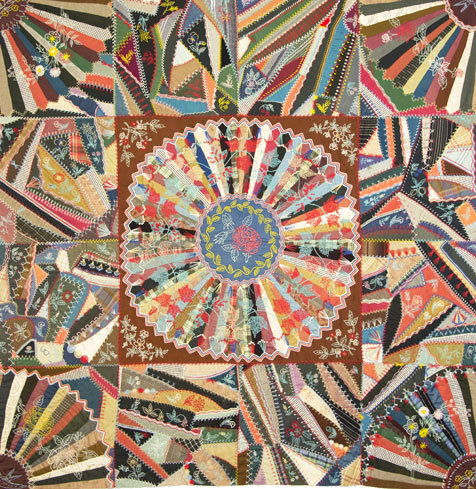The Beauty of American Quilting
I am enthralled with the beauty of quilts. The time, effort and love of the quilter shows in each quilt as well as the talent of the quilter.
There are several types of quilts that are my own favorites although there are many other types:
1. Baltimore or Album Quilts – These beauties originated in Baltimore, Maryland in the 1840s. They have become one of the most popular styles of quilts and are still made today. These quilts are made up of a number of squares called blocks. Each block has been appliqued with a different design. The designs are often floral, but many other motifs are also used, such as eagles and landmarks. They have a background of white and incorporate many primary colors such as reds, greens, and blues. Baltimore / Album
2. Amish & Mennonite Quilts. Antique Amish quilts are unique. Like many quilts, they are a product of their time, place, and people. The Amish, like the Mennonites and Hutterites, are “Plain people,” who, while living in communities all over North America, have always lived their lives unlike other modern Americans. They reject much of contemporary culture as unnecessary, the Plain people have maintained a way of life focused on faith, hard work, and community for over 300 years. Many of the differences that set the Amish and other Plain people apart from their neighbors also set their quilts apart from quilts made by others. Amish designs tend to be straightforward, simple and uncluttered, combining practicality, functionality, and fine craftsmanship. Amish
3. Pieced and Patchwork Quilts – Originally, these types of quilts were made to use scrap and accumulated fabric. The blocks were produced over time and then assembled into a quilt. Nothing went to waste! You will see all types – bright and bold colors, different geometric patterns, even ones that, at first glance, don’t appear to be very pretty. Keep in mind that these were made to use and were constructed of scrap fabric whatever it was – pretty or not. Patchwork
4. Applique – I think this is my favorite type. The workmanship is amazing – I don’t think I could ever be that precise or have such beautiful hand stitches. Often made of whole cloth, with the design applied to a single large piece of fabric, or combined in some way with patchwork design, applique quilts required more fabric than patchwork quilts, so were usually associated with more affluent times. Since these quilts were likely to be a more artistic expression of the quilter’s craft, they came to be the prime choice for masterpiece quilts. Applique designs were drawn largely from nature — flowers, trees, and figures. Such motifs were both quite realistic and elaborate, or most frequently with some measure of abstraction and simplification. Applique was also used as a means of “picture making” in story quilts, a long-held American folk art tradition. Applique
5. Crazy Quilts – Crazy quilts became popular in the late 1800s, likely due to the English embroidery and Japanese art that was displayed at the Philadelphia Centennial Exposition. American audiences were drawn to the satin stitches used in English embroidery, which created a painterly surface, which is reflected in many Crazy Quilts. The displays shown at the Japanese pavilion of silk screened work and Japanese pottery with a cracked-glaze inspired the American audiences. Similar aesthetics began to show up in Crazy Quilts, including unique patterns, and stitching that resembled spider webs and fans.
6. Crazy quilting rapidly became a national fashion among urban, upper-class women, who used the wide variety of fabrics that the newly-industrialized 19th century textile industry offered to piece together single quilts from hundreds of different fabrics. Long after the style had fallen out of fashion among urban women, it continued in rural areas and small towns, whose quilters adopted the patterns of the urban quilts but employed sturdier, more practical fabrics, and dropped the earlier quilts’ ornate embroidery and embellishment.
7. Trapunto – from the Italian for “to quilt”, trapunto is a method of quilting that is also called stuffed. It features a puffy, decorative design that used at least two layers and produces a raised surface on the quilt. from the Italian for “to quilt,” is a method of quilting that is also called “stuffed technique.” A puffy, decorative feature, trapunto utilizes at least two layers, the underside of which is slit and padded, producing a raised surface on the quilt.
8. Tobacco or Cigar Paper Quilts – Nineteenth and early 20th century tobacco companies had some unique ways of promoting their products. These promotions made possible the lesser-known practice of sewing quilts and other decorative items out of silk and flannel tobacco premiums. These quilts are very colorful and once again you see the theme of letting nothing go to waste!
This is the first in a series. Up next: The Story of My Beautiful Quilt.














Comments
No comments were published for this post yet.
The comments are closed in this post.